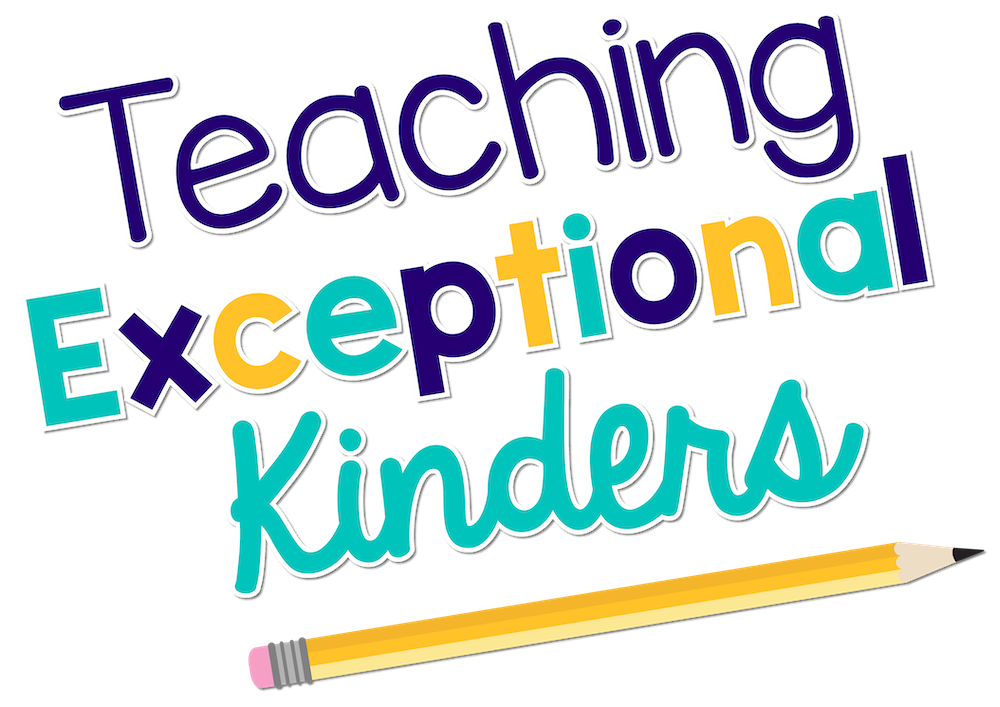Tips for Choosing Calming Corner Tools
Now that we’ve talked about several of the must-haves when setting up a classroom calming space, it’s time to choose tools that will help your students regulate their emotions when they are upset. This process should be more than just putting a couple of toys on the shelf! In this post, I’m going to share some tips for choosing effective calming corner tools for your classroom.
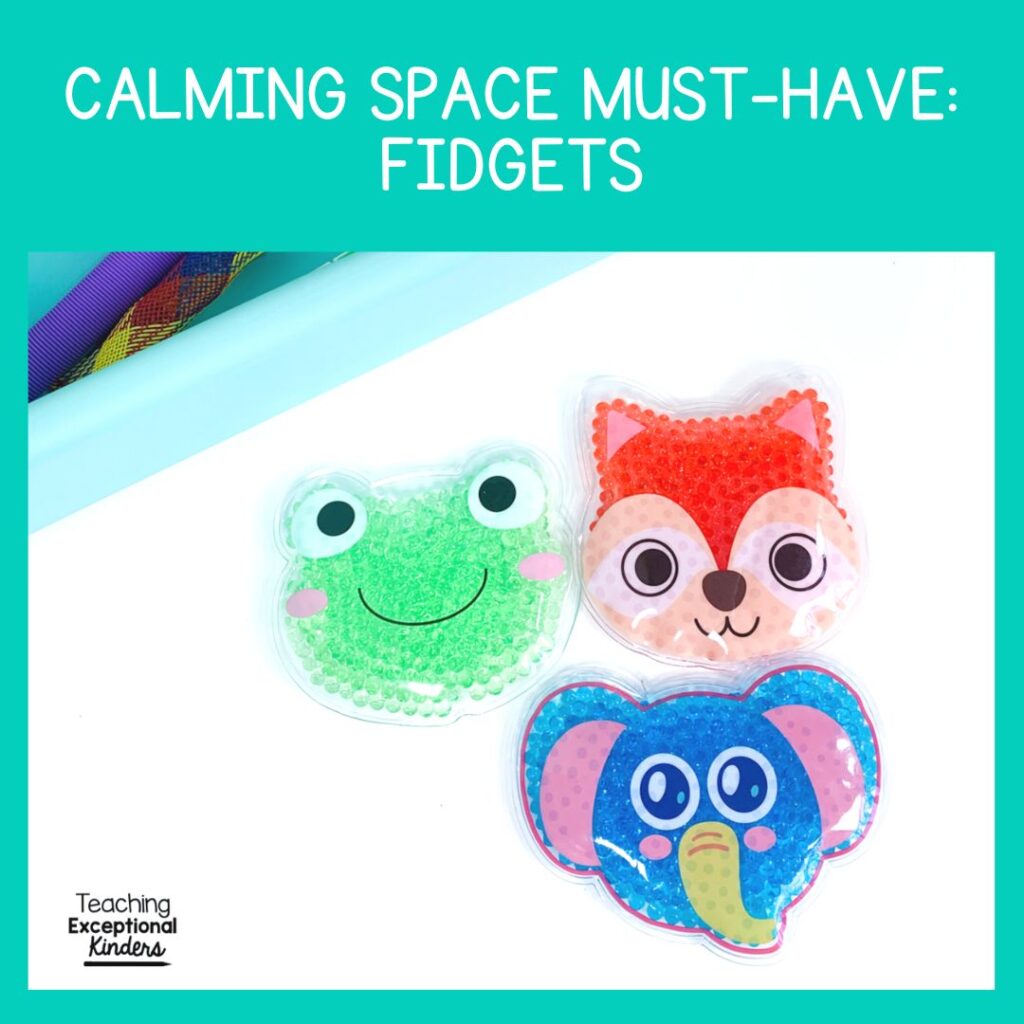
What Are Calming Corner Tools?
Calming corner tools help students regulate their emotions and address their sensory needs when they are escalated. This might be watching sand flow through a timer or it could be pulling on a stretchy snake. You’ll often hear these tools being referred to as “fidgets” or “sensory tools.”

5 Tips for Choosing Calming Corner Tools
There is no “perfect” fidget when it comes to a calming corner tool, which is what makes it so challenging to find the right ones for your classroom! Here are five things to consider when you're choosing sensory tools for your classroom.
1. Think About Your Students
The first step in deciding on fidgets for your calm down corner is to think of the individual students in your classroom. You want to choose sensory tools that they will be interested in using and that they’ll be able to use for the intended purpose. For example, if you have students who you know can’t use play dough properly, that wouldn’t be something to add to your calming space.
It’s helpful to think of the students who might be frequent users of this area in your classroom. What types of sensory tools would be most effective for them? Do they display any specific sensory-seeking behaviors when they are upset? Do they already use a fidget in class, so you need to find something related but different?
You should also think about the learning experience of the students who are not in the calming space. The sensory tools that you choose for your classroom should not distract the students who are still in their seats. Whether the sensory tools are too loud or they look like too much fun, there are many ways that calming corner tools might be distracting for the rest of your class.
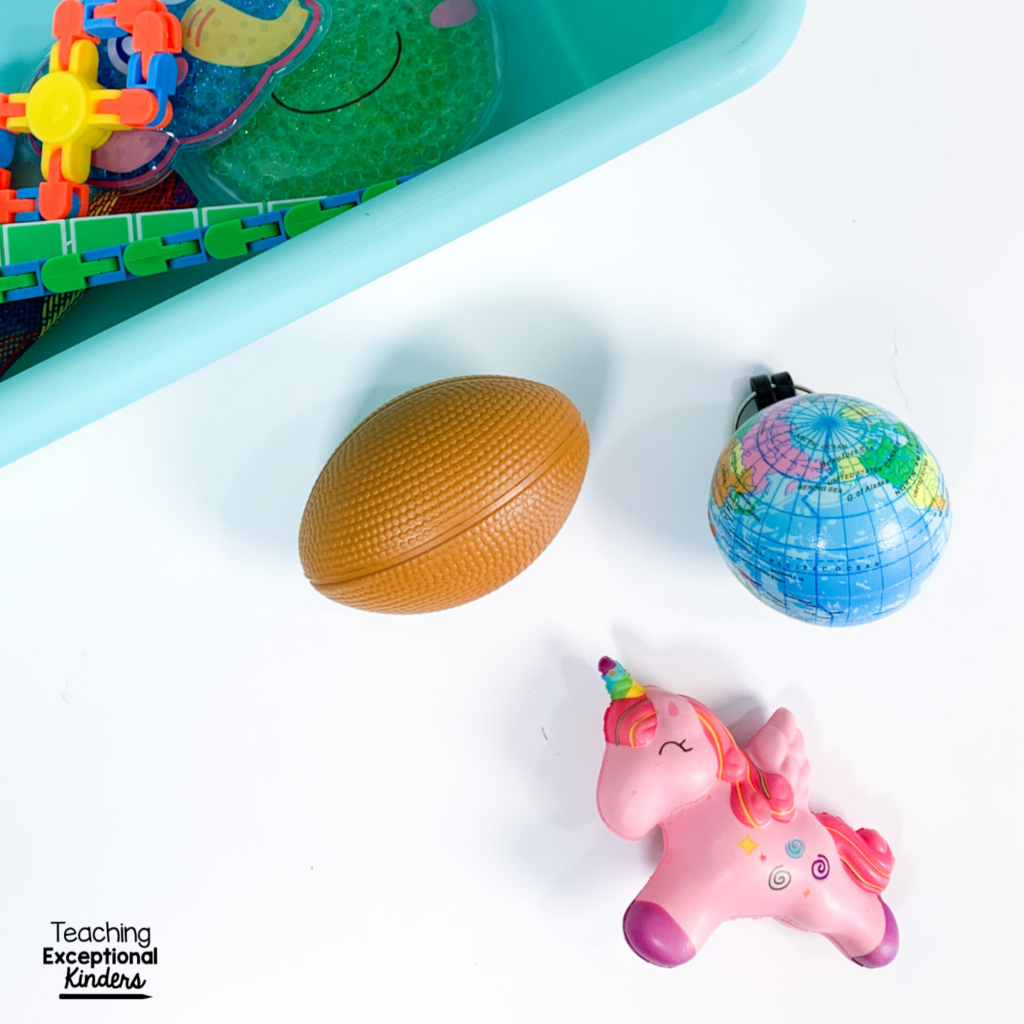
2. Provide a Limited Selection
If you haven’t already gathered from my other posts in this series, less is more when it comes to a kindergarten calming space! When students are frustrated and escalated, it’s essential that they have to make as few decisions as possible. As adults, the last thing we want to do when stressed out and overstimulated is making decisions! Escalated students need to be welcomed with limited choices when they enter your classroom calm down area.
You might decide to try out a variety of sensory tools to see which ones your students gravitate towards. You can put out two different fidget options for a week and then switch them out with something else from your stash.
3. Think About Storage
Speaking of fidget stashes, storage is an important thing to consider when you’re setting up your classroom calming area. Where will you keep the current choices available for students? Will they be on an open shelf, in a clear box, or on a plastic tray?
Something as simple as how you store your sensory tools can have a big impact on the effectiveness of your calming space. If they’re tucked away too well, students are unlikely to find the sensory tools they need when they’re escalated. If they’re displayed too prominently, they might become just another visual distraction or something your talkative students want to chat about. Choose fidgets that will easily fit within your method of storage and access.
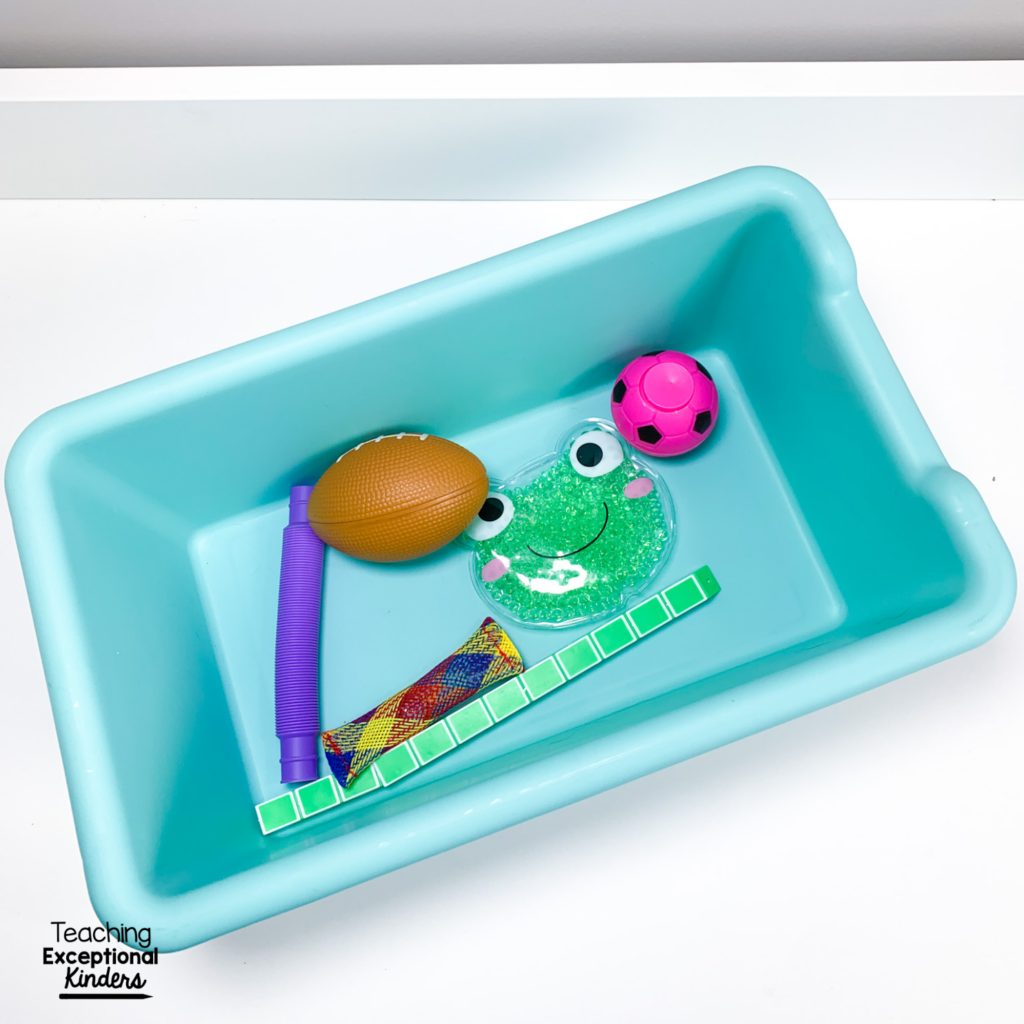
4. Consider Student Safety
The next step is to look at your fidget choices through the eyes of a student who throws things when escalated. It’s important to consider the fact that most sensory tools will become projectiles at some point. Will it break if it’s thrown across the room? If it hits another student, will it likely cause an injury?
You should also consider the safety of a sensory tool as it ages. Wear and tear of a fidget can make it more prone to breaking open, leaving behind a pile of filler beads, gel, or liquid. Make sure that the fidgets you use are made of non-toxic materials…inside and out!
5. Choose Easy-to-Clean Options
Many young students seek sensory input by putting things in their mouths. This is one reason why it’s important that your calming corner tools are easy to clean! That doesn’t mean easily-wipeable surfaces are your only option! You can choose sensory tools that can go through the dishwasher or plush items that are machine washable.
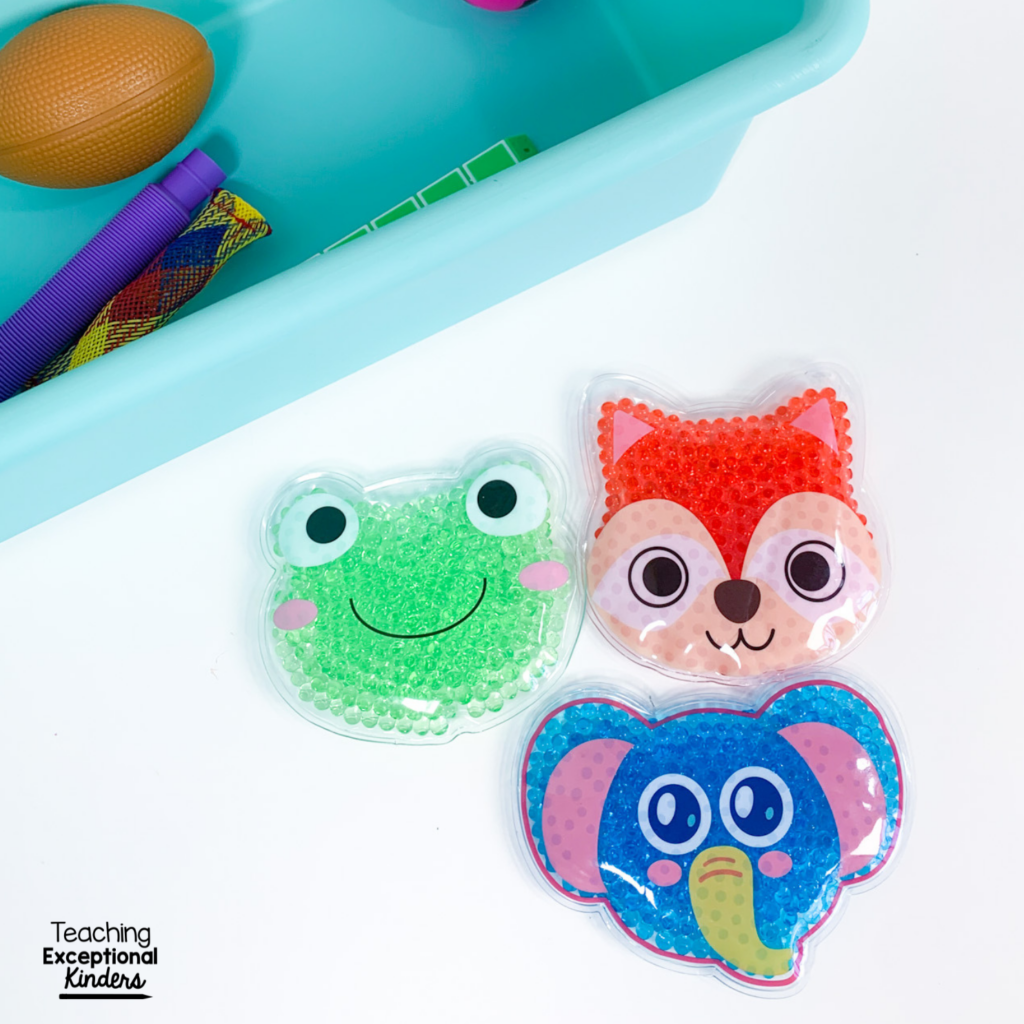
Another important thing to consider about the cleanliness of your fidgets is how easily they can be “reset” after they’ve been used. If you choose a sensory option that has multiple pieces (or that can be split into more pieces), this will take more time to clean up than a small, one-piece fidget. If you have a plush toy that was well-loved by an escalated student, be sure to have another item waiting in the wings when it’s time to reset the calming corner.
My Favorite Calming Corner Tools
Most of my favorite sensory tools for calming corners can be found on Amazon. In fact, you can even find multi-packs with a variety of different fidgets that you can try with your students! Here are some affiliate links to my favorites:
- Fidget Variety Pack: https://amzn.to/3LmnPjS
- Toggle (Tangle) Fidget: https://amzn.to/40bpw89
- Water Bead Fidget Pack: https://amzn.to/3Fn8qw3
- Bubbler: https://amzn.to/43iIlIN
Would you like to see some of my favorite calming corner tools in action? Check out this video where I walk you through some of my favorite fidgets for a kindergarten calming space. If you like to gather teaching tips in video format, be sure to subscribe to my YouTube channel!
Save These Tips for Calming Corner Tools
I hope that this post gives you some inspiration for your classroom calming space! If you'd like to come back to these calming corner ideas later, be sure to save this post! You can add the pin below to your favorite teaching board on Pinterest.
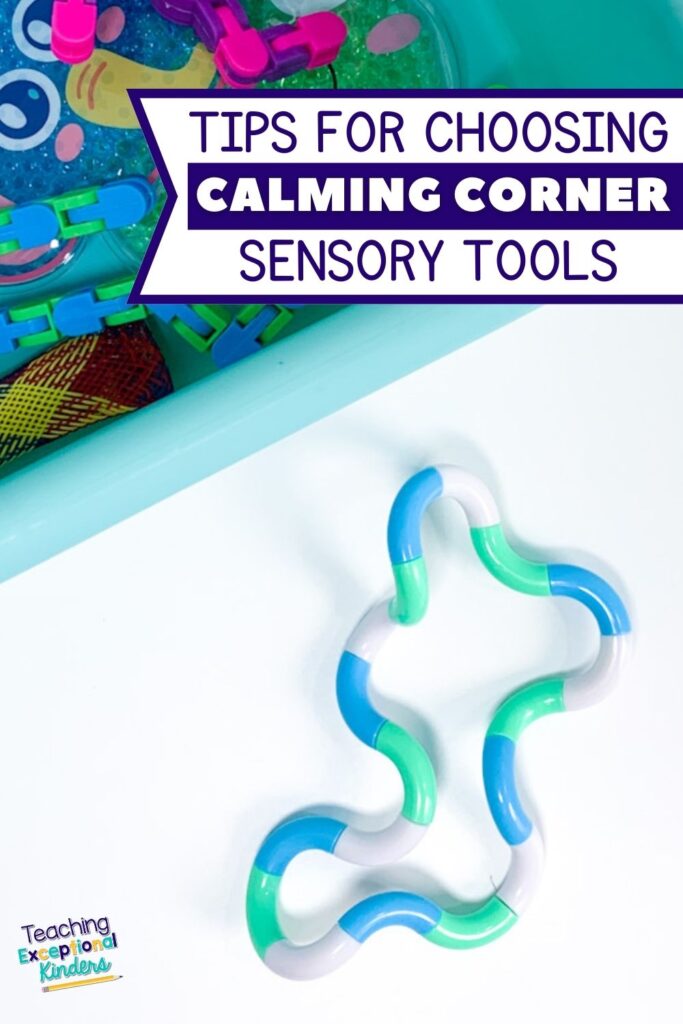
Amy
SITE DESIGN BY LAINE SUTHERLAND DESIGNS

